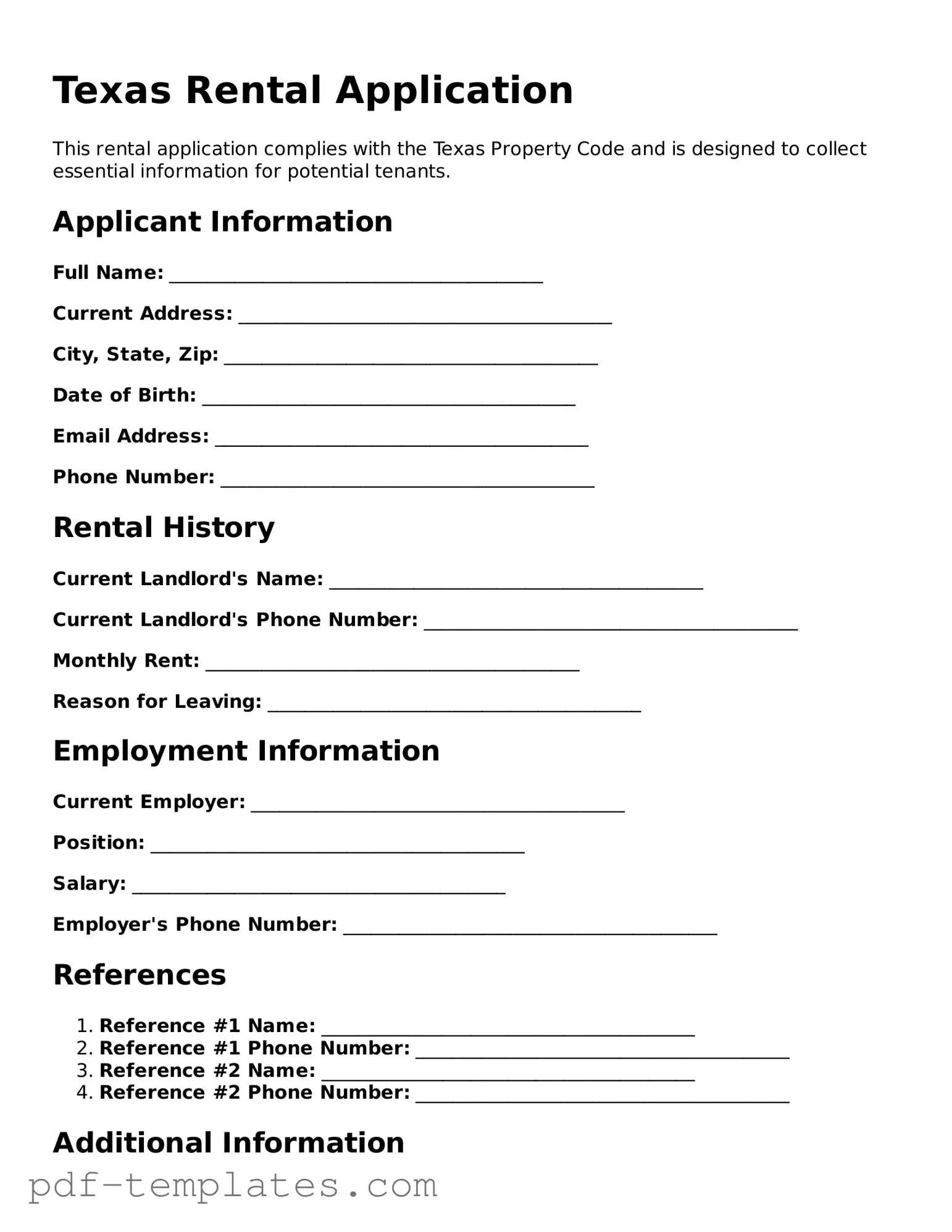The Texas Rental Application form shares similarities with the standard Lease Agreement. Both documents outline the terms and conditions of renting a property. While the application focuses on the tenant's qualifications, the lease agreement formalizes the rental arrangement, detailing the rights and responsibilities of both parties. Each document serves as a crucial step in the rental process, ensuring that both landlords and tenants are on the same page before any commitments are made.
Another document that aligns closely with the Texas Rental Application is the Tenant Screening Report. This report typically includes background checks, credit history, and rental history. Just like the rental application, it helps landlords assess the suitability of potential tenants. Both documents aim to provide a clear picture of the applicant’s reliability and financial responsibility, allowing landlords to make informed decisions.
The Rental Agreement is also similar to the Texas Rental Application. While the application is a preliminary step, the rental agreement finalizes the terms of occupancy. Both documents require personal information and may ask for references. They work together to ensure that the tenant’s information is verified before signing the lease, protecting both the landlord and tenant.
The Guarantor Agreement is another document that has similarities with the Texas Rental Application. If a tenant lacks sufficient credit history or income, a guarantor may be required. Both documents often include personal information about the guarantor, ensuring they are financially capable of covering the rent if the tenant fails to do so. This adds an extra layer of security for landlords.
The Move-In Checklist is also akin to the Texas Rental Application. While the application assesses tenant qualifications, the checklist details the condition of the property before the tenant moves in. Both documents serve to protect the interests of landlords and tenants, ensuring that any existing issues are documented and agreed upon before occupancy begins.
In preparing for medical decisions, it's crucial to consider a Texas Living Will form that allows individuals to articulate their healthcare preferences. This document plays a vital role in ensuring that your wishes are followed when you cannot communicate them. For those interested in understanding how to navigate this important legal tool, a detailed guide on a Texas Living Will is available to assist you.
The Pet Application form has similarities with the Texas Rental Application, especially for pet-friendly rentals. Both forms require detailed information about the applicant, including references and background checks. They help landlords evaluate the potential impact of a pet on the property and ensure that tenants are responsible pet owners.
The Employment Verification form is another document that resembles the Texas Rental Application. Both require information about the applicant’s employment status and income. This verification helps landlords assess whether the tenant can afford the rent, making it a critical part of the application process.
The Credit Application is also similar to the Texas Rental Application. Both forms require financial information and consent for credit checks. They serve to evaluate the applicant’s financial history, helping landlords gauge the likelihood of timely rent payments and overall reliability.
Finally, the Background Check Consent form shares similarities with the Texas Rental Application. Both documents require the applicant’s permission for background checks. This ensures that landlords can verify the information provided and make informed decisions about potential tenants.
